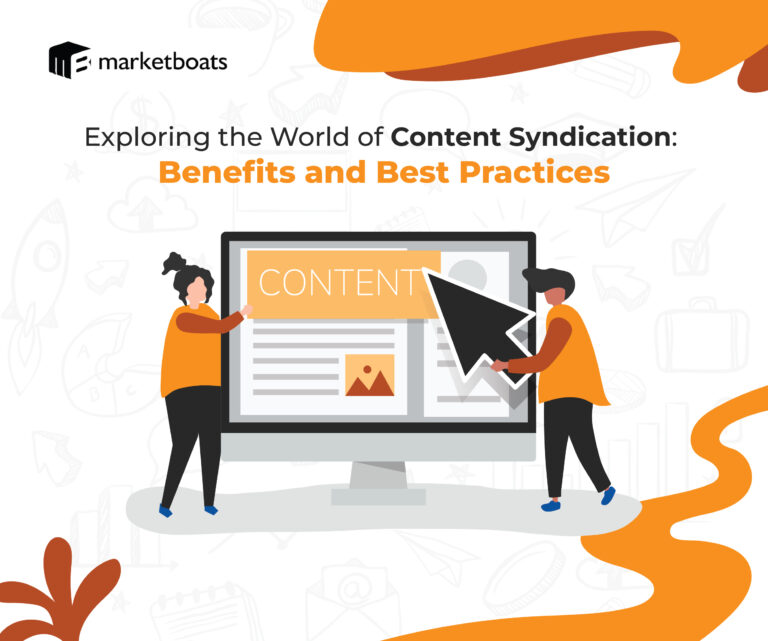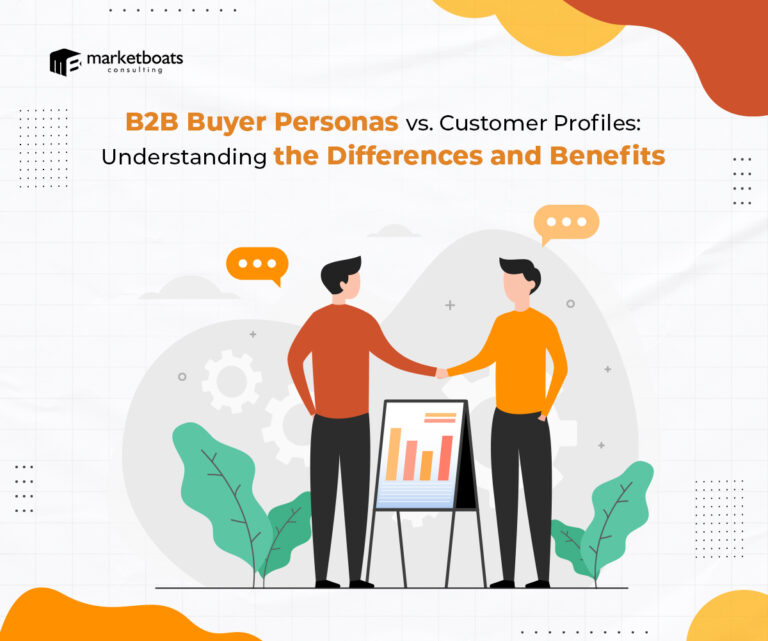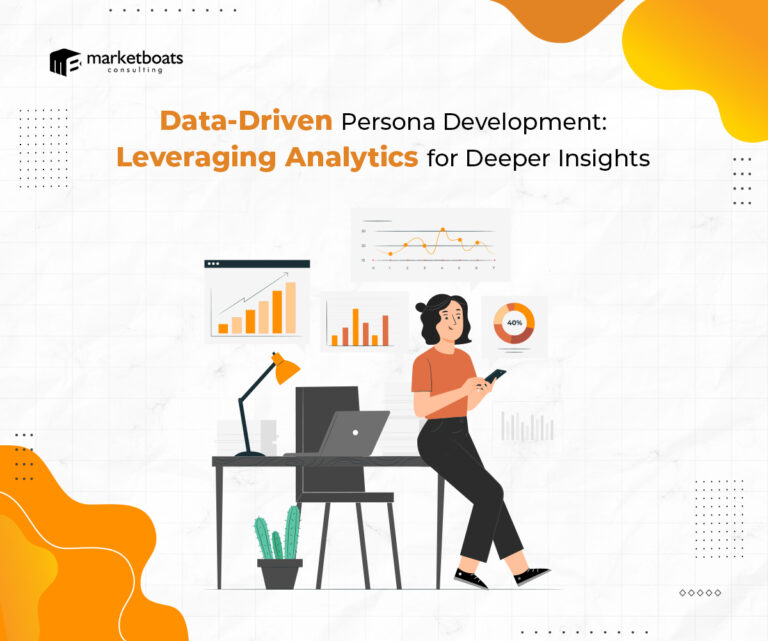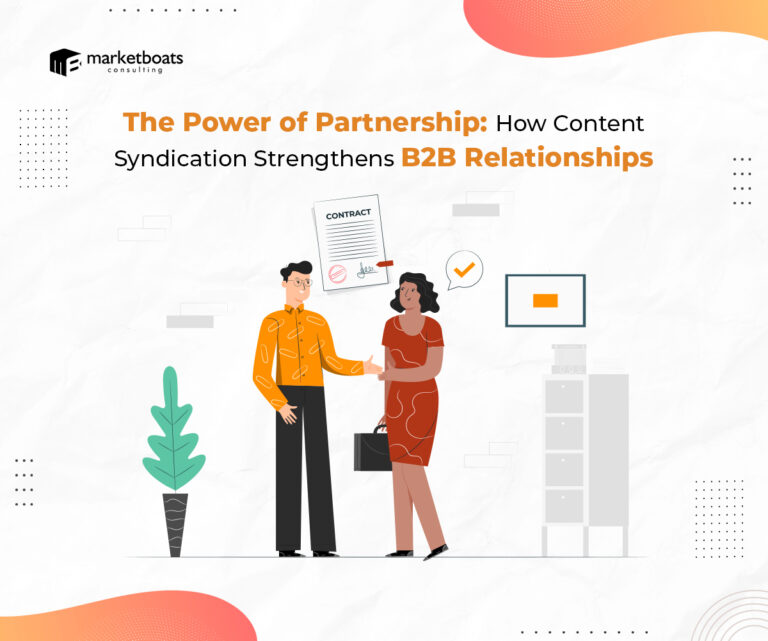Concentrating your efforts on a specific audience may seem to defy logic, but it could be the key to unlocking business success. Although reaching out to a wide audience is tempting, doing so can dilute the message and leave prospective marketing leads feeling uninspired.
People appreciate products and services that are tailored to their needs. This creates a sense of exclusivity and expertise that can be a game-changer. After all, who doesn’t want to get what was custom-made just for them?
Every business wants to attract ‘ideal customers’ who generate substantial revenue and align with the company’s business goals and values.
But what exactly does it mean to have an “ideal customer”?
In B2B marketing, an ideal customer profile is a description of a company that is considered a perfect fit for the products or services being sold. By defining the ideal customer profile, a business can target sales-qualified leads who are in-market and need an offer.
But how to identify and attract such customers?
This article will explore the importance of an ideal customer profile, how to qualify marketing leads, and the benefits of a streamlined approach.
Attributes of the “ideal customer”
The key attributes and characteristics of the ideal customer can help businesses make more informed decisions about their product roadmaps, marketing campaigns, and sales strategies.
So, what are these attributes that make a customer ideal? Here’s a brief discussion.
- They are happy to pay for your products or services: You can expect more positive outcomes from clients willing to invest in your services. They also provide better communication and collaboration, which in turn lead to better results in the long run.
- They genuinely value/appreciate what you offer: An ideal customer recognizes the value of your ability to solve their problem and is happy to compensate you for it. As a result, they explain what they hope to achieve and provide feedback along the way. Having a clear understanding of their expectations helps to make the final product successful.
- They are loyal and communicative: When clients appreciate your work, they often show it in words and actions, helping foster a positive relationship. In addition, good clients understand the importance of clear communication and providing detailed instructions for their projects. This helps to ensure that you can deliver quality work that meets their expectations, and they will often provide feedback along the way.
- They proactively engage with your business: An ideal customer will not only be a sales-qualified lead, but they will also actively engage with your business. A successful customer needs to have a professional attitude and come to the table with ideas and questions that show they have thought through the proposed solution and are empowered to move forward.
- They become your brand advocate: Not only do the ideal customers represent a reliable source of income, but they also act as brand advocates within the market, continuing to spread positive information about the company and its products or services. They provide repeat business, make referrals, and are usually willing to try out any new products and services released.
Decoding the ideal customer hunt: The “who,” “why,” and “how”
To decode the ideal customer hunt, it’s essential to use data-driven insights to inform your marketing strategies. Identifying the ideal customers to turn into sales-qualified leads requires digging deeper to refine the basic understanding of their demographics, psychographics, and behaviors.
Here’s how to decode the ideal customer hunt:
Firmographics – the “who”
Firmographics refer to the demographic characteristics of a company or organization, and they are a critical aspect of identifying the “who” in finding an ideal customer base. Examples of firmographics include industry, job title, current tech stack, location (HQs and branches), territory maps, employee size, sales cycle length, annual and quarterly revenue, seniority, and more.
Businesses can use firmographics to segment potential customers, identify the most promising prospects, and tailor their marketing efforts to their needs and preferences. For example, a B2B software company could focus on targeting mid-sized manufacturing companies in the Midwest region of the United States. There are specific needs in this segment, and it is accessible to smaller companies that have lower revenues. A software company can increase its chances of success by targeting marketing efforts at this specific segment, such as attending regional industry events.
Psychographics – the “why”
Psychographics are critical to identifying the “why” in finding an ideal customer base. This type of segmentation is based on different personality traits, values, interests, and other psychological factors that influence consumer behavior. By understanding potential customers’ motivations, beliefs, and preferences, businesses can create targeted marketing campaigns that resonate with them on a deeper level.
By using psychographic segmentation, businesses can also identify potential customers who may not fit the traditional demographic characteristics of their target audience. For instance, a health food company could target customers who prioritize environmental sustainability, ethical sourcing, and health and wellness.
Communication – the “how”
Communication plays a critical role in identifying the “how” in finding an ideal customer profile. It involves understanding how to reach potential marketing leads with messages that resonate with them and address their pain points. Effective communication requires selecting the right channels to reach your target audiences, such as social media, email, direct mail, or trade shows. Businesses should also tailor their messaging to speak directly to their ideal customers’ pain points and needs.
For example, a financial institution targeting busy professionals may choose to advertise on LinkedIn, where this audience is most active, and emphasize their online banking services to appeal to customers’ need for convenience. Effective communication strategies allow businesses to reach their ideal customer base more effectively and build stronger relationships.
The 7-step guide to finding and targeting your ideal customer
After identifying the defining characteristics of your ideal customer, the subsequent step is to create a strategy for locating them within your target market.
Step 1: Understand your products or services
Knowing your offerings’ unique features and benefits will help you define and identify your ideal customers. A clear understanding of your products or services makes it easier to narrow down the list of traits you are looking for in a customer, such as age, interests, style, gender, behaviors, and goals.
These details can help create a customer persona and build a profile that matches your ideal customer’s traits. By defining and understanding your product or service, you can identify your unique value proposition, which can help you appeal to your ideal customer and stand out from your competition.
Step 2: Outline your business goals
Creating realistic sales and marketing goals can help you identify the steps needed to achieve them. Your ideal customer profile should align with these established goals and outline who your ideal customer is and how they behave.
By defining your business goals, you can ensure that your marketing and promotional strategies are tailored to attract and target the right customers, leading to better engagement, increased sales, and overall business growth. Moreover, understanding your business goals and ideal customer profile can help you continually evaluate and refine your marketing strategies, ensuring your efforts remain focused and effective.
Step 3: Analyze past and existing customer interactions
Analyzing past and existing customer interactions can provide valuable insights into your ideal customer. You can gather customer behavior, preferences, and demographics data through various channels like website analytics, social media, customer surveys, and sales data.
By analyzing this data, you can identify patterns and trends in customer behavior and preferences, such as which products or services they prefer, how they prefer to shop, and their pain points. This information can help you refine your target audience and create more personalized marketing strategies for better lead marketing.
Step 4: Build your ideal customer profile
An ideal customer profile is a detailed description of the type of customer that would benefit the most from your product or service. The process of building an ICP may require time and effort, but it helps your business focus its resources on the most valuable customers, ultimately leading to increased growth and success.
Step 5: Align sales and marketing
Aligning sales and marketing efforts around your ideal customer is crucial to the success of your business. 87% of sales and marketing leaders say collaboration between the two teams is critical for business growth. 85% say marketing and sales alignment is a massive opportunity to improve business performance.
Sales and marketing alignment involves creating a shared framework of goals and strategies backed by continual communication, enabling both teams to work cohesively as a whole. This ensures that the message to customers is consistent and targeted, increasing the chances of closing a sale.
Step 6: Create sales intelligence
Creating sales intelligence based on sales conversations can provide valuable insights into the needs and preferences of potential customers. It is critical to target the right profiles with the most relevant proposition. By analyzing customer interactions with conversation intelligence tools, sales teams can identify patterns in what draws customers to their offerings, who is involved in the decision-making process, and what solutions their product or service provides to the customer.
Additionally, sales intelligence can help sales leaders coach their reps and provide necessary feedback to close more deals, ultimately leading to better sales results and a more successful business.
Step 7: Promote your business to attract and retain your ideal customers
Promoting your business to attract and retain your ideal customers is crucial to ensure that your marketing efforts reach the right audience with the most relevant message. Combining demographic and psychographic data is important to create effective marketing strategies targeting the ideal customer.
Demographic data includes basic information about your customers, such as age, gender, income, and location, while psychographic data refers to more detailed information about their interests, values, and behaviors. Combining these two data types allows you to create customer personas that help you better understand your target audience and tailor your marketing messages accordingly.
From ideal customers to sales-qualified leads: What next?
Once you have identified your ideal customer profile, the next step is to find and engage with potential customers who fit that profile, also known as sales leads. These leads may show interest in your brand in various ways, such as:
- Signing up for emails or newsletters to stay updated on your brand’s offerings and updates.
- Filling out a contact form on your website or social media page to learn more about your products or services.
- Requesting a free quote or demo of your products or services, indicating that they are interested in potentially making a purchase.
- Engaging with your brand’s social media posts, commenting on them, and showing interest in your offerings.
Not all leads are ready to make a purchase right away. To turn a lead into a qualified prospect, you must determine if your company’s products or services fit their problem and guide them through the sales qualification process.
Steps to follow
Converting ideal customers into marketing leads involves a series of steps:
Step 1 – Identify and define the ideal customer, which can be done by researching the market and analyzing data. Once the ideal customer has been identified, sales reps can use top-down sales strategies to find and contact decision-makers within the organization.
Step 2 – The next step is to ask strategic questions and analyze the responses to tailor the product or service to meet the customer’s needs.
Step 3 – Finally, lead nurturing involves building relationships with them through personalized marketing and consistent communication to keep them engaged and interested in your product or service.
Summing up
Identifying the perfect customer base can be a challenging and intimidating process. Nevertheless, it is a crucial step toward business growth and improvement. Investing in marketing efforts without targeting the right customer base can waste time and resources. You may end up targeting people with no interest in your product, resulting in a significant loss of money.
Hence, leaving the identification of your ideal customer base to chance is not advisable.
If you are uncertain about identifying your ideal customers for lead marketing, seeking help from a qualified agency with expertise in this area is recommended.
Marketboats Consulting assists businesses in pinpointing, nurturing, and qualifying leads to ensure optimal conversion rates. Our lead generation and lead enrichment services are informed by comprehensive insights and data analysis, allowing you to focus your marketing efforts on the most promising prospects.
Get in touch today!





